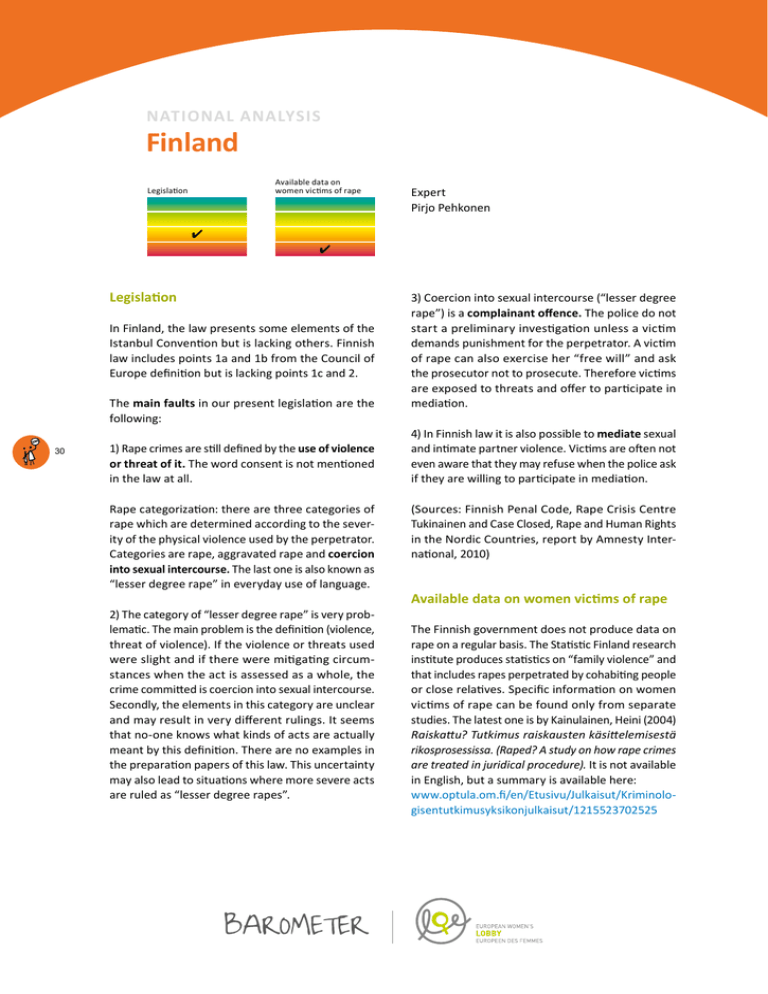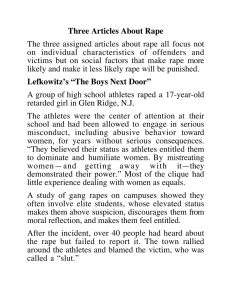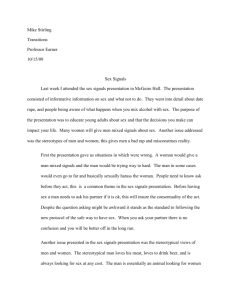
NATIONAL ANALYSIS
Finland
Available data on
women victims of rape
Legislation
Expert
Pirjo Pehkonen
4
4
Legislation
In Finland, the law presents some elements of the
Istanbul Convention but is lacking others. Finnish
law includes points 1a and 1b from the Council of
Europe definition but is lacking points 1c and 2.
The main faults in our present legislation are the
following:
30
1) Rape crimes are still defined by the use of violence
or threat of it. The word consent is not mentioned
in the law at all.
Rape categorization: there are three categories of
rape which are determined according to the severity of the physical violence used by the perpetrator.
Categories are rape, aggravated rape and coercion
into sexual intercourse. The last one is also known as
“lesser degree rape” in everyday use of language.
2) The category of “lesser degree rape” is very problematic. The main problem is the definition (violence,
threat of violence). If the violence or threats used
were slight and if there were mitigating circumstances when the act is assessed as a whole, the
crime committed is coercion into sexual intercourse.
Secondly, the elements in this category are unclear
and may result in very different rulings. It seems
that no-one knows what kinds of acts are actually
meant by this definition. There are no examples in
the preparation papers of this law. This uncertainty
may also lead to situations where more severe acts
are ruled as “lesser degree rapes”.
3) Coercion into sexual intercourse (“lesser degree
rape”) is a complainant offence. The police do not
start a preliminary investigation unless a victim
demands punishment for the perpetrator. A victim
of rape can also exercise her “free will” and ask
the prosecutor not to prosecute. Therefore victims
are exposed to threats and offer to participate in
mediation.
4) In Finnish law it is also possible to mediate sexual
and intimate partner violence. Victims are often not
even aware that they may refuse when the police ask
if they are willing to participate in mediation.
(Sources: Finnish Penal Code, Rape Crisis Centre
Tukinainen and Case Closed, Rape and Human Rights
in the Nordic Countries, report by Amnesty International, 2010)
Available data on women victims of rape
The Finnish government does not produce data on
rape on a regular basis. The Statistic Finland research
institute produces statistics on “family violence” and
that includes rapes perpetrated by cohabiting people
or close relatives. Specific information on women
victims of rape can be found only from separate
studies. The latest one is by Kainulainen, Heini (2004)
Raiskattu? Tutkimus raiskausten käsittelemisestä
rikosprosessissa. (Raped? A study on how rape crimes
are treated in juridical procedure). It is not available
in English, but a summary is available here:
www.optula.om.fi/en/Etusivu/Julkaisut/Kriminologisentutkimusyksikonjulkaisut/1215523702525
By way of illustration, statistics in 1997 show that
468 rapes or attempted rapes were reported to the
police, whereas only 47 rape charges were made during that same year. This means that merely 10% of
the rapes reported to the police led to a prosecution.
According to the material assembled for the period
1998–1999, some 1,000 cases of rape or attempted
rape were reported to the police.
Useful Contact
Rape Crisis Centre Tukinainen Free helpline,
Tel. 0800-97899
www.tukinainen.fi
31




